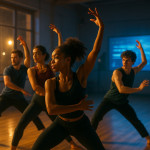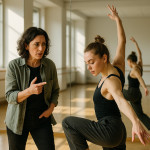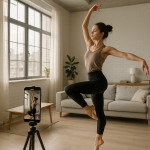Cross-conditioning for dancers: external fitness methods preventing injuries 2025
Want fewer injuries and longer careers? Cross-conditioning for dancers blends targeted strength, mobility and cardio work taken from other sports to bullet-proof joints and keep you performance-ready all year. This 2025 guide shows you exactly which external fitness methods work, how to schedule them around rehearsals, and what results to expect.
Why cross-conditioning is a non-negotiable in 2025
Dancers face repetitive load on ankles, knees and spine. A recent insurance report showed 68 % of professional dancers file at least one injury claim per season. Cross-conditioning introduces varied stimuli that correct muscular imbalances, improve bone density and cut overuse injuries dramatically.
Top three injury mechanisms you can beat
- Impact overload – jumps without adequate landing strength.
- Hyper-mobility without control – extreme ranges lacking stabilising muscles.
- Fatigue-driven errors – late-show mistakes when cardio capacity is low.
Best external fitness methods for dancers
| Method | Primary Benefit | Weekly Dosage | Injury Risk Reduction* |
|---|---|---|---|
| Pilates Reformer | Core stability & spinal alignment | 2 × 50 min sessions | Up to 30 % fewer lower-back strains |
| Weighted Strength Circuits | Bone density, landing power | 2 × 40 min sessions | 25 % drop in ankle sprains |
| Yoga (Vinyasa) | Active flexibility & breath control | 1 × 60 min class | Better recovery; reduces hamstring pulls |
| Swimming / Aqua-jog | Low-impact cardio & joint decompression | 1 × 45 min session | 15 % fewer overuse knee issues |
| HIIT Dance-Specific | Fatigue resistance for long shows | 1 × 20 min protocol | Lowered error-based injuries late performance |
| Foam Rolling & Mobility | Fascia release, range upkeep | 10 min daily | Accelerates micro-tear recovery |
*Aggregated from peer-reviewed dance medicine studies 2018-2024.
How to structure a dance-friendly cross-conditioning week
Below is a proven micro-cycle for a dancer working five rehearsal days and two show nights. Adjust volumes in peak tour periods.
- Monday – AM: Pilates Reformer; PM: choreography rehearsal.
- Tuesday – AM: Strength circuit (lower body focus); PM: tech run.
- Wednesday – AM: Vinyasa yoga & breath work; PM: light conditioning.
- Thursday – AM: Swimming intervals; PM: dress rehearsal.
- Friday – AM: Strength circuit (upper & core); PM: opening-night performance.
- Saturday – PM: Matinee + evening show; inter-show: 10 min foam rolling.
- Sunday: Active recovery walk, foam rolling, mindfulness.
Programming tips for busy touring dancers
- Prioritise compound lifts (deadlift, squat variations) over isolated machines to save time.
- Use hotel pools for aqua-jogging when no gym is available.
- Insert data-driven engagement metrics into your training log to track fatigue objectively.
Common mistakes (and quick fixes)
- Copy-pasting sport workouts – Dancers need eccentric control; swap standard calf raises for slow lowering variations.
- Skipping deloads – Every four weeks, cut external load by 40 % to allow tissue adaptation.
- Improper self-taping of sessions – Record technique just as you would with audition self-tapes to spot alignment errors.
Real-life success story: Maya, contemporary dancer
Maya logged 12 ankle sprains across three seasons. After adding twice-weekly Reformer Pilates and 20 min HIIT, she completed a 42-city tour injury-free, improved jump height by 7 %, and booked a broadcast job via online dancer training portfolios.
FAQ
- How long before I see results from cross-conditioning?
- Most dancers report better stamina within four weeks and measurable strength gains after eight.
- Will lifting weights make me “bulky”?
- No. Programs use moderate loads (40-60 % 1RM) with high focus on mobility, keeping lines lean.
- Which method is best if I have only 30 minutes?
- Opt for a HIIT circuit combining plyometrics and core—the highest injury-prevention return per minute.
- Can beginners follow this schedule?
- Start with one external session per week, master technique, then layer additional modalities.
- Do I need special equipment on tour?
- Resistance bands, a TRX and a travel foam roller cover 80 % of protocols.
Quick self-check quiz: Are you cross-conditioning smart?
Next steps & resources

Block two cross-conditioning slots into your calendar today, then bookmark our guide to assessing dance reels and rapid profile scanning so you can showcase new power safely on video. Need personalised programming? Connect with a certified dance-medicine coach before the next rehearsal cycle. Stay consistent for lasting benefits.











